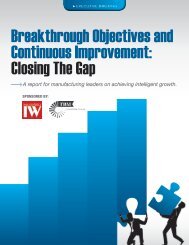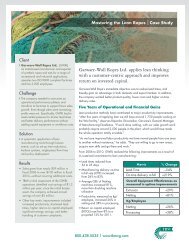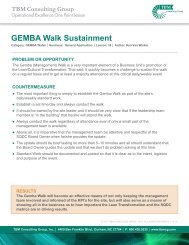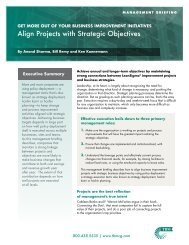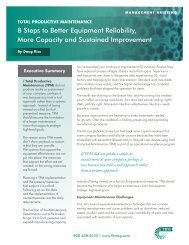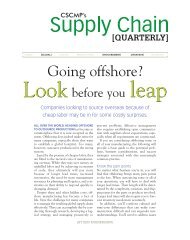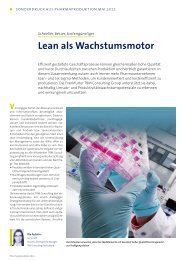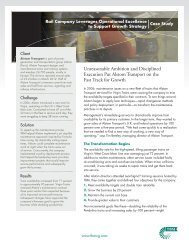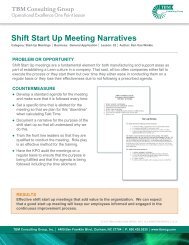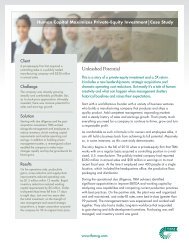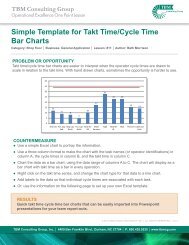clicking here - TBM Consulting Group
clicking here - TBM Consulting Group
clicking here - TBM Consulting Group
Create successful ePaper yourself
Turn your PDF publications into a flip-book with our unique Google optimized e-Paper software.
P G . 5<br />
The Principle-Driven Stage<br />
RATE OF CHANGE<br />
1 TOOL DRIVEN 2 SYSTEM DRIVEN 3 PRINCIPLE DRIVEN<br />
TIME<br />
Year 1 Year 2 Year 3 Year 4 Year 5<br />
For companies in the principle-driven stage<br />
process-improvement concepts are thoroughly<br />
embedded in a comprehensive business<br />
management and performance system. Cost<br />
reductions and productivity gains remain<br />
important, but many improvement initiatives<br />
directly support revenue growth.<br />
Companies in this stage are able to leverage<br />
their operational advantages—such as fast<br />
order-to-delivery times (often 50 percent faster<br />
than the industry average), responsiveness<br />
to customer inquiries and superior product<br />
reliability—to increase market share. An intense<br />
focus on customers drives end-to-end value chain<br />
alignment characterized by strong supplier<br />
relationships and customer linkages.<br />
These connections should boost new product<br />
introductions as indicated by “product vitality,”<br />
the percent of revenue coming from new product<br />
sales over a 12- to 36-month period depending<br />
upon the typical product lifecycle. In the high<br />
tech or fashion sectors, for example, a product<br />
vitality objective might be to have 30-50 percent<br />
of revenue coming from products introduced in<br />
the past 6-12 months.<br />
Strong customer relationships also enable quick<br />
responses to supply or demand disruptions, and<br />
enhance the ability to capitalize on new market<br />
openings. When such a culture is embedded<br />
across the enterprise, individual leadership<br />
changes do not affect the underlying culture or<br />
performance trajectory.<br />
At this stage, the process-improvement<br />
knowledge and expertise of the organization can<br />
drive acquisition opportunities. Management’s<br />
intimate understanding of the potential for<br />
operational improvement—coupled with strong<br />
cash flow and enhanced margins—guides due<br />
diligence, rapid integration of acquisitions and<br />
post-integration activities.<br />
Ongoing areas of focus for process improvement<br />
efforts include:<br />
1. Use of free cash to buy competitors or to acquire<br />
businesses or technology in new markets.<br />
2. A leadership development process provides<br />
opportunities for talented people to learn and<br />
gain responsibility quickly, often in newly<br />
acquired businesses.<br />
3. A core focus on innovation processes, starting<br />
with the ability to clearly understand voice<br />
of customer (VOC), translate needs into<br />
meaningful product innovations, effective<br />
process to design for manufacturability and<br />
profitability, and an ability to improve speed<br />
to market.<br />
4. Support functions—maintenance, accounting,<br />
customer service, and suppliers—are fully<br />
integrated into the continuous improvement<br />
mindset.<br />
800.438.5535 | www.tbmcg.com



